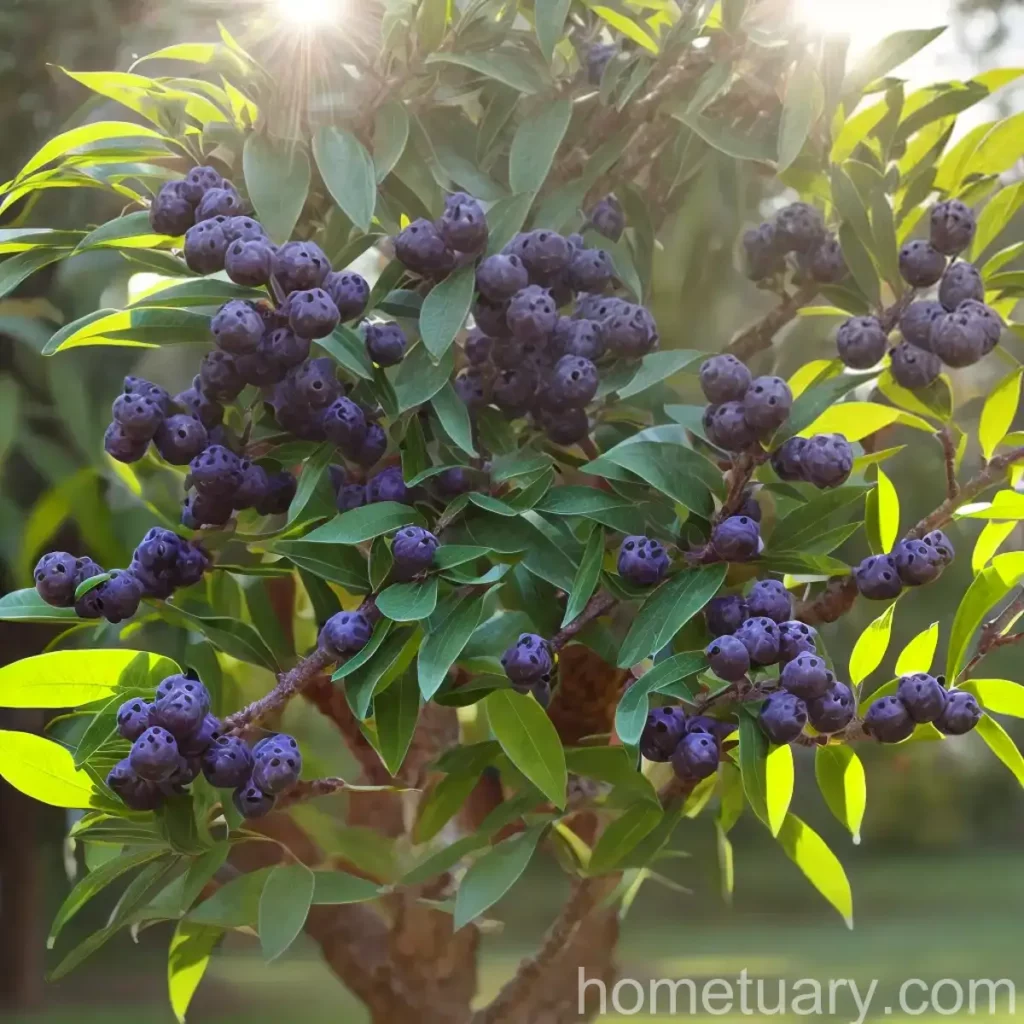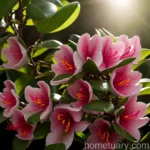The World of Fetter Bush (Lyonia lucida)
Introduction
Plants, in all their forms, are an indispensable part of our ecosystem. They provide essential oxygen, food, and aesthetic beauty. In this article, we will delve into the world of fetter bush (Lyonia lucida), exploring its characteristics, uses, cultivation, and maintenance. We will unravel the intricacies of this ornamental shrub and understand how it can be integrated into diverse landscapes, offering a wealth of benefits.
What is Fetter Bush?
Fetter Bush Species
Fetter bush, scientifically known as Lyonia lucida, is a species of flowering plant in the heath family, Ericaceae. It is native to the southeastern region of the United States. The plant is characterized by its glossy, evergreen foliage and delicate, urn-shaped flowers. The fetter bush typically thrives in moist, acidic soil, and is often found in swampy or boggy areas.
Fetter Bush Characteristics
- Appearance: The fetter bush is a medium-sized shrub, growing up to 6 to 10 feet in height, with an equal spread. Its glossy, dark green leaves provide an attractive contrast to the delicate, waxy, bell-shaped flowers that bloom in clusters.
- Foliage: The foliage of the fetter bush is evergreen, providing year-round visual appeal.
- Flowers: The flowers of the fetter bush are typically white or light pink. They bloom abundantly in late spring to early summer, attracting pollinators such as bees and butterflies.
- Wildlife Value: The plant provides shelter and food for various wildlife species, contributing to the biodiversity of its habitat.
Natural Habitat and Landscape Uses
In its natural habitat, fetter bushes are often found in damp, wooded areas, such as bogs, swamps, and alongside streams. Due to its aesthetic appeal and ecological benefits, the fetter bush has become popular for landscaping in gardens, parks, and natural reserves.
Key Takeaways – Fetter Bush (Lyonia lucida)
Before we delve deeper into the cultivation and maintenance of fetter bushes, let’s summarize some key takeaways to keep in mind:
- Fetter bush is a native evergreen shrub with glossy foliage and delicate, urn-shaped flowers.
- It thrives in moist, acidic soil and is commonly found in swampy or boggy areas.
- The plant provides year-round visual appeal and attracts pollinators, contributing to the biodiversity of its habitat.
- It is a popular choice for landscaping in gardens, parks, and natural reserves.
Now let’s explore the culture of fetter bushes and gain insights into the best practices for their cultivation and maintenance.
Culture
Cultivating fetter bushes involves understanding their specific requirements and ensuring that they are met for optimal growth and development. This section will cover various aspects of fetter bush culture, including water, sunlight, fertilizer, soil, and pruning techniques.
Uses
Ornamental Value
Fetter bushes are widely prized for their ornamental value. They are often used in landscaping to create borders, hedges, or as standalone focal points in gardens. Their glossy foliage and abundant flowers make them an attractive addition to diverse landscapes.
Ecological Benefits
In addition to their aesthetic appeal, fetter bushes offer ecological benefits. They provide food and shelter for wildlife, including birds, butterflies, and other pollinators. Their evergreen foliage ensures that they maintain their visual appeal throughout the year, contributing to the overall biodiversity of their environment.
Water
Water Needs
Fetter bushes have moderate water needs, particularly during their establishment phase and in periods of drought. It is essential to ensure that the soil around the plant remains consistently moist, but not waterlogged. Proper watering is crucial for the plant to develop a healthy root system and maintain its overall vigor.
Drought Tolerance
Once established, fetter bushes exhibit a degree of drought tolerance. Their deep root systems enable them to withstand brief periods of water scarcity. However, during prolonged drought conditions, supplemental watering may be necessary to support the plant’s vitality.
Sunlight
Sun Exposure
Fetter bushes thrive in partial to full sunlight. They require at least 4 to 6 hours of direct sunlight each day to ensure robust growth and abundant flowering. In regions with intense heat, providing some shade during the hottest part of the day can help prevent stress and sunburn on the foliage.
Shade Tolerance
While fetter bushes prefer sunlight, they also demonstrate a degree of shade tolerance. In locations with limited direct sunlight, the plant can still thrive, albeit with potentially reduced flowering and overall growth rate.
Fertilizer
Nutrient Requirements
Fetter bushes have modest nutrient requirements. When planting in nutrient-poor soil, incorporating organic matter such as compost or well-rotted manure into the planting site can provide essential nutrients and improve soil structure. Additionally, a balanced, slow-release fertilizer formulated for acid-loving plants can be applied in spring to support healthy growth and flowering.
Avoiding Excess Fertilization
It is important to avoid over-fertilizing fetter bushes, as excessive nutrients can disrupt the natural balance of the soil and lead to adverse effects on the plant’s overall health. Following the recommended application rates and frequency specified on the fertilizer packaging is crucial to prevent nutrient imbalances.
Soil
Soil Type
Fetter bushes thrive in acidic, well-drained soil. They prefer soil with a pH range between 4.5 and 5.5. In habitats where the natural soil pH is higher, incorporating amendments such as elemental sulfur or pine bark can help create the acidic conditions that fetter bushes favor.
Soil Moisture
While fetter bushes require moist soil, it is important to avoid waterlogged conditions. Proper soil drainage is essential to prevent the risk of root rot and other moisture-related issues. Organic mulch can help retain soil moisture and regulate temperature, promoting a healthy root environment for the plant.
Pruning
Pruning Techniques
Pruning plays a crucial role in maintaining the health and appearance of fetter bushes. Regular pruning can help shape the plant, remove dead or diseased branches, and encourage new growth and flowering. It is recommended to prune fetter bushes immediately after the blooming period to avoid impacting the next season’s flower production.
Fetter Bush Hedge
Fetter bushes can be pruned to form attractive, dense hedges. Regular trimming can help create a neat, formal hedge or a more natural, informal boundary within the landscape. Proper pruning techniques are essential to ensure that the hedge maintains its desired shape and density.
Propagation
Methods of Propagation
Fetter bushes can be propagated through various methods, including:
- Seed Sowing: Collecting seeds from mature fetter bushes and sowing them in a controlled environment to promote germination and early growth.
- Softwood Cuttings: Taking softwood cuttings from healthy, established plants and encouraging them to root in a suitable growing medium.
- Division: Dividing mature fetter bushes to create new plants, ensuring that each division has sufficient roots and foliage for successful establishment.
Propagation Tips
To increase the likelihood of successful propagation, it is important to maintain a consistently moist, but not waterlogged, environment for seeds and cuttings. Providing bottom heat or using a propagation heat mat can promote root development in cuttings, enhancing their overall success rate.
Container Popularity
Fetter bushes are increasingly being cultivated in containers, providing an opportunity for gardening enthusiasts to enjoy their beauty in a more confined space. The versatility of container cultivation allows fetter bushes to thrive on patios, balconies, or any outdoor area with sufficient sunlight and space for the container.
Container Common Diseases
Disease Diagnosis
While fetter bushes are generally resilient, they can be susceptible to certain diseases, including:
- Powdery Mildew: A fungal disease that manifests as a powdery, white coating on the leaves, causing them to wither and distort.
- Leaf Spot: A common fungal infection characterized by the development of dark spots on the foliage, often leading to premature leaf drop and reduced vigor.
Disease Management
To manage diseases effectively, it is important to maintain good air circulation around the plant and avoid overhead watering, which can promote the spread of fungal spores. Additionally, applying appropriate fungicidal treatments at the first signs of disease can help prevent its escalation and protect the overall health of the fetter bush.
Common Pests
Pest Identification
Fetter bushes can attract certain pests, including:
- Aphids: Small, sap-sucking insects that can cause distortion and discoloration of the foliage.
- Spider Mites: Tiny arachnids that feed on the plant’s sap, leading to stippling and webbing on the leaves.
Pest Control
Implementing natural predators such as ladybugs and lacewings can help manage aphid populations. Additionally, frequent monitoring of the plant for early signs of pest infestation can facilitate prompt intervention and prevent significant damage.
Botanist’s Tips
Incorporating fetter bushes into landscapes and gardens offers numerous benefits, including their ornamental beauty, ecological value, and relatively low maintenance requirements. Some additional tips to consider when cultivating fetter bushes include:
- Companion Planting: Pairing fetter bushes with other acid-loving plants, such as azaleas and rhododendrons, can create visually appealing and ecologically beneficial garden spaces.
- Wildlife Habitat: Incorporating fetter bushes into wildlife-friendly garden designs can enhance the biodiversity of the landscape, supporting various species of birds, pollinators, and beneficial insects.
Fun Facts
- The name “fetter bush” is derived from the Old English word “faedre,” meaning “gloomy” or “dark.” This name reflects the plant’s preference for shaded, woodland environments.
- Fetter bushes are known to produce natural dyes from their bark and leaves, providing a historical and cultural connection to traditional dyeing practices.
Links to External Resources
For further exploration of fetter bushes and related topics, the following external resources are recommended:
- University of Florida IFAS Extension: Lyonia lucida
- Lady Bird Johnson Wildflower Center: Lyonia lucida
- North Carolina State Extension: Fetterbush
- The United States National Arboretum: Lyonia lucida
In conclusion, the fetter bush (Lyonia lucida) is a versatile and beneficial plant that offers a myriad of opportunities for enriching landscapes, supporting wildlife, and adding aesthetic charm to various outdoor spaces. Understanding its specific cultural needs and integrating it into well-designed gardens can create thriving, environmentally conscious ecosystems that serve both humans and nature alike.
The comprehensive guide to fetter bushes provides valuable insights for enthusiasts, horticulturists, and nature lovers who seek to expand their knowledge of plant cultivation and create diverse, sustainable landscapes. Explore the references and external resources to delve deeper into the captivating world of the fetter bush.















